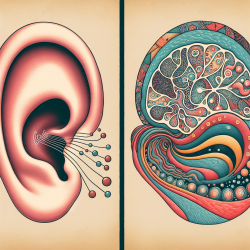Tinnitus, often described as a phantom sound perceived without external stimuli, affects millions worldwide. Despite its prevalence, the pathophysiology of tinnitus remains elusive. Recent research on auditory brainstem responses (ABR) offers new insights into this complex condition. This blog explores key findings from a comprehensive review of ABR studies in tinnitus patients and discusses how practitioners can leverage these insights to improve diagnosis and treatment.
The Role of Auditory Brainstem Responses in Tinnitus
The auditory brainstem response (ABR) is a valuable tool for assessing neural activation along auditory pathways. In tinnitus research, ABRs have been used to differentiate between peripheral and central lesion sites and to evaluate treatment efficacy. The review titled "Auditory Brainstem Responses in Tinnitus: A Review of Who, How, and What?" compiles data from 22 studies involving 1,240 tinnitus subjects and 664 controls. The focus was on participant characteristics, methodologies, and outcomes related to amplitude and latency of waves I, III, and V.
Key Findings
- Heterogeneity Across Studies: The review highlighted significant variability in participant characteristics and methodologies across studies. This heterogeneity poses challenges for drawing consistent conclusions.
- Amplitude and Latency Differences: While differences in amplitude and latency between tinnitus patients and controls were not consistent across studies, longer latency and reduced amplitude of wave I in tinnitus subjects with normal hearing emerged as a notable finding.
- The Need for Standardization: The review underscores the importance of standardizing ABR methodologies to facilitate meaningful comparisons between studies.
Implications for Practitioners
The findings from this review offer several implications for practitioners:
- Enhanced Diagnosis: Understanding the nuances of ABR findings can aid in more accurate diagnosis of tinnitus subtypes.
- Treatment Evaluation: ABRs can be used to assess the efficacy of tinnitus treatments over time.
- Research Opportunities: Practitioners are encouraged to engage in further research to explore the potential of ABRs in understanding tinnitus mechanisms more deeply.
This research highlights the complexity of tinnitus and the need for continued exploration. By standardizing methodologies and expanding research efforts, we can move closer to unraveling the mysteries of this condition.










